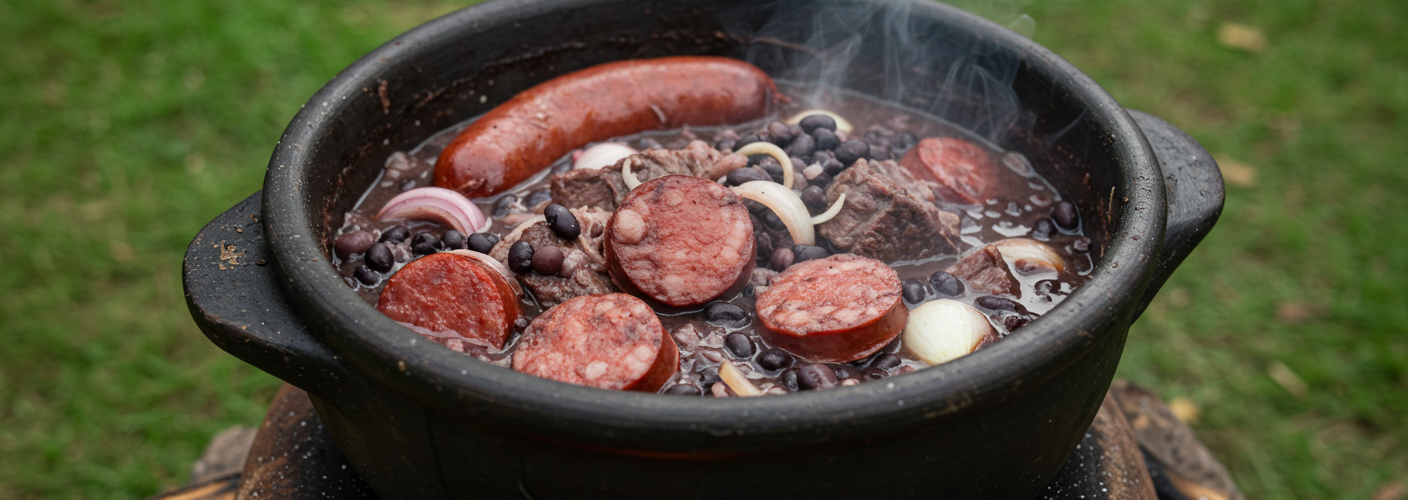Feijoada, a beloved dish hailing from Brazil, is not just food; it’s an experience steeped in tradition and cultural significance. This hearty black bean stew, typically made with a variety of meats, is a staple of Brazilian cuisine, offering a warm, comforting flavor that has captivated the hearts (and stomachs) of many.
At its core, feijoada consists of black beans simmered slowly with numerous types of meat, including pork, beef, and sometimes even sausage. The combination of ingredients creates a rich and flavorful stew that beautifully balances the earthy notes of the beans with the savory depths of the meats. The preparation of feijoada is a labor of love that often involves slow cooking for several hours to ensure that all the flavors meld beautifully together.
Historically, feijoada has roots in the fusion of African, Portuguese, and indigenous Brazilian cultures. During colonial times, slaves would prepare this dish using cuts of meat that were often considered undesirable by the higher classes, which they would combine with black beans, a staple ingredient in the region. Over the years, feijoada evolved into a dish that was embraced and celebrated by all social classes, eventually becoming a national favorite.
Feijoada is traditionally served with a variety of accompaniments, augmenting its rich flavors and textures. Typical side dishes include fluffy white rice, tangy collard greens, orange slices, and farofa, a toasted cassava flour mixture that adds a delightful crunch. The combination of these elements makes for a colorful and satisfying plate, inviting diners to mix and match as they please.
The experience of enjoying feijoada goes beyond just the act of eating. It typically brings family and friends together for a long and leisurely meal, reflecting the communal spirit that is so vital in Brazilian culture. On Saturdays, many families and restaurants host feijoada feasts, inviting everyone to come together and share this delicious meal. This sense of togetherness and celebration is what sets feijoada apart; it is more than just a dish; it’s a tradition that fosters connections.
For those looking to try their hand at preparing feijoada at home, the process may seem daunting at first, but it is a rewarding endeavor. Start by soaking the black beans overnight to ensure they cook evenly. In a large pot, sauté onions, garlic, and any choice of smoked meats like sausage or bacon until they release their aromas. Gradually add in the beans, along with enough water or broth to cover them, and let everything simmer over low heat. The longer you cook feijoada, the better the flavors meld together, so patience is key!
In conclusion, feijoada is a dish that beautifully represents Brazilian history and culture. It is a celebration of flavors, community, and tradition, reflecting the diverse influences that shape this vibrant country. Whether enjoyed at a family gathering or in a bustling restaurant, feijoada brings warmth and joy to the table, making it a must-try for anyone venturing into the world of international cuisine. So next time you find yourself craving something hearty, consider giving feijoada a spot on your dining table—you won’t be disappointed.




Add comment